Japanese Muromachi Period Ironwork ‘Kutsuwa’ Horse Bit and Rein Guide
A Rare Japanese Muromachi Period Ironwork ‘Kutsuwa’ Horse Bit and Rein Guide an Inscription Finely Incised to the Inner Side ‘Myōchin Yoshimitsu Saku’ Made by Myōchin Yoshimitsu and ‘Echizen (No) Kuni Ju’ Living in the Echizen Region
Contained in an old Japanese black lacquered woven bamboo and paper lined box
An attached label detailing the inscription in Japanese
16th Century / End of Muromachi Period
Size: approx: 16cm high, 22cm wide, 8cm deep - 6¼ ins high, 8¾ ins wide, 3¼ ins deep
Contained in an old Japanese black lacquered woven bamboo and paper lined box
An attached label detailing the inscription in Japanese
16th Century / End of Muromachi Period
Size: approx: 16cm high, 22cm wide, 8cm deep - 6¼ ins high, 8¾ ins wide, 3¼ ins deep
A Rare Japanese Muromachi Period Ironwork ‘Kutsuwa’ Horse Bit and Rein Guide an Inscription Finely Incised to the Inner Side ‘Myōchin Yoshimitsu Saku’ Made by Myōchin Yoshimitsu and ‘Echizen (No) Kuni Ju’ Living in the Echizen Region
Contained in an old Japanese black lacquered woven bamboo and paper lined box
An attached label detailing the inscription in Japanese
16th Century / End of Muromachi Period
Size: approx: 16cm high, 22cm wide, 8cm deep - 6¼ ins high, 8¾ ins wide, 3¼ ins deep
Contained in an old Japanese black lacquered woven bamboo and paper lined box
An attached label detailing the inscription in Japanese
16th Century / End of Muromachi Period
Size: approx: 16cm high, 22cm wide, 8cm deep - 6¼ ins high, 8¾ ins wide, 3¼ ins deep
The Myōchin were a family of traditional skilled metal workers who made armour and armour accessories. A Samurai helmet in the Victoria and Albert Museum made of sixty-two iron plates is signed ‘Myōchin Nobuie’ who was one of the earliest members of this dynasty. It dates from the late Muromachi period, around 1550 - 70, and no earlier pieces of their work are known to have been made before the 16th century. Despite this, the Myōchin were notorious for their practice of crediting their own family workshops with the manufacture of all early armour and accessories.
In the mid 16th century the Portuguese brought Barbary and Arabian horses to Japan which quickly became popular with the Shogunate and Samurai. They were bred with the native Mongolian ponies which resulted in a larger and faster mount for the Japanese cavalry. Amongst the nobility racing these swift horses along the terraces of the palace watched by the court became a favourite pastime.
In the mid 16th century the Portuguese brought Barbary and Arabian horses to Japan which quickly became popular with the Shogunate and Samurai. They were bred with the native Mongolian ponies which resulted in a larger and faster mount for the Japanese cavalry. Amongst the nobility racing these swift horses along the terraces of the palace watched by the court became a favourite pastime.
Japanese Muromachi Period Ironwork ‘Kutsuwa’ Horse Bit and Rein Guide
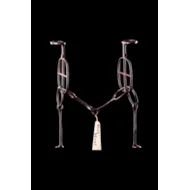
SOLD
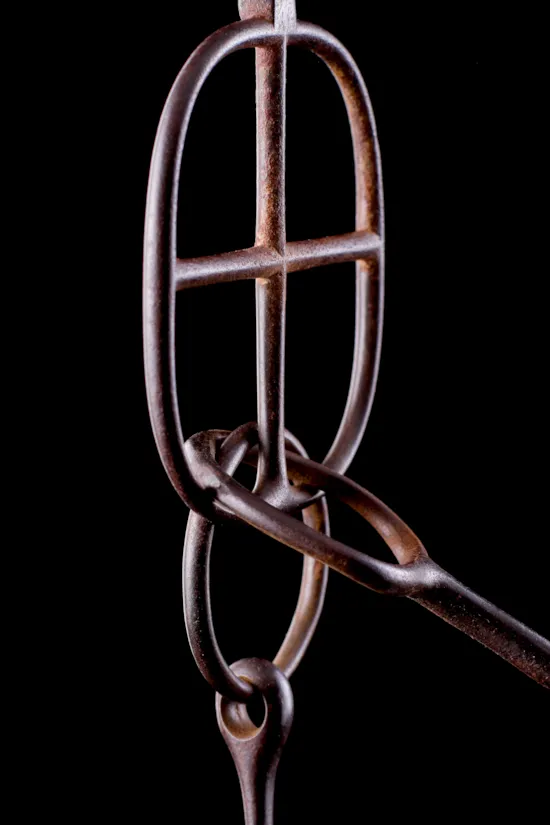
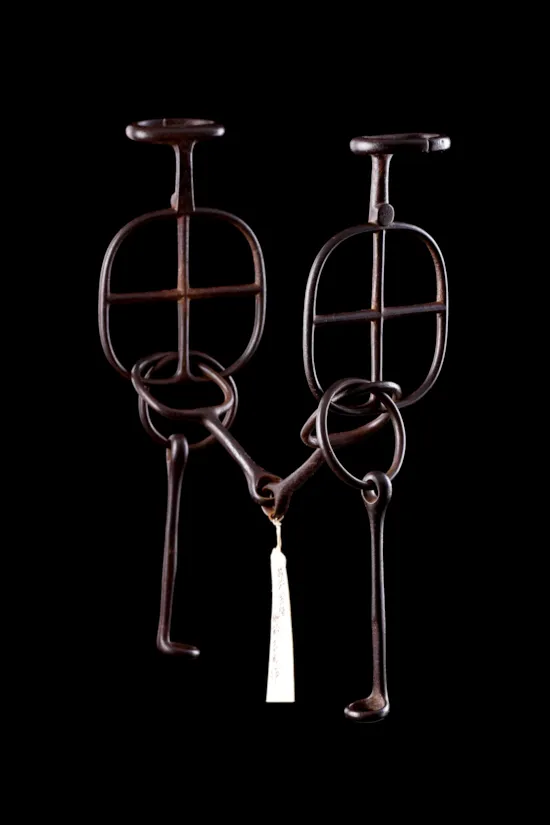
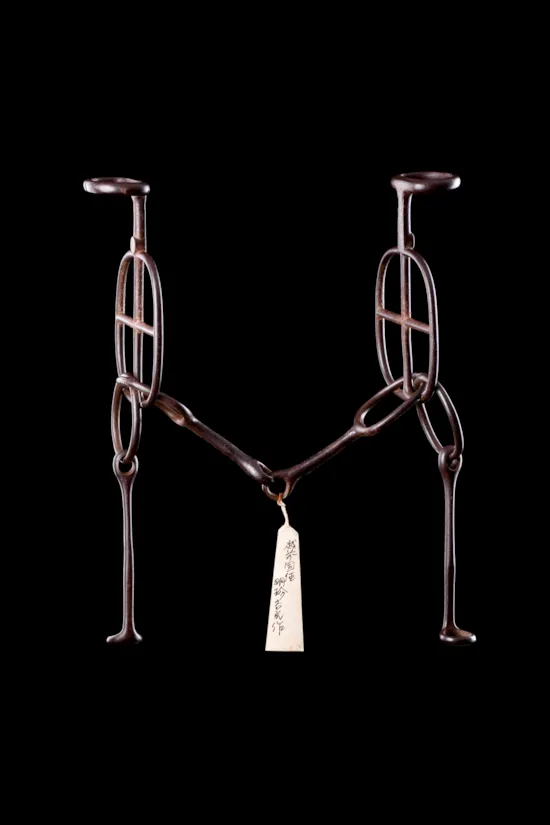
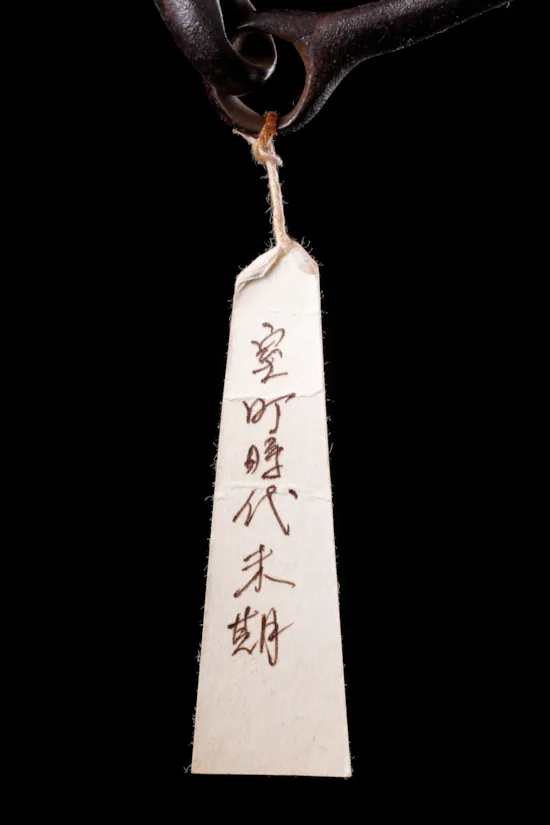
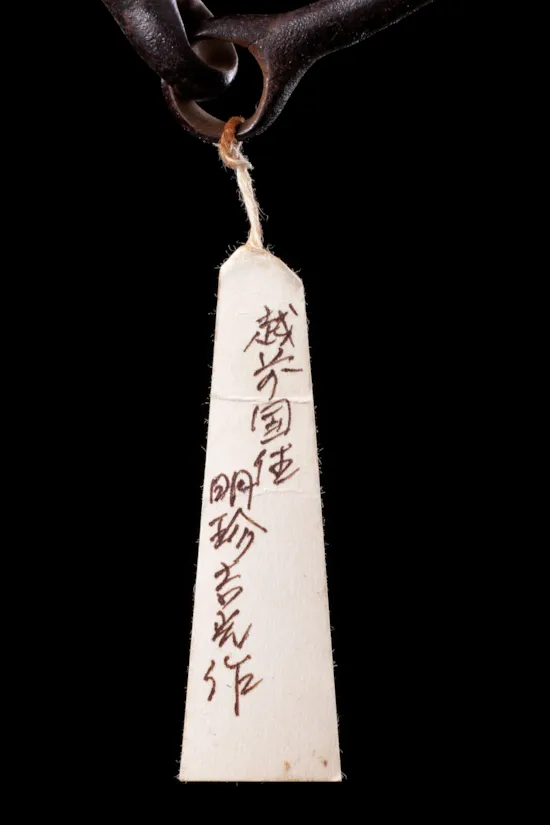





YOU MAY ALSO LIKE


